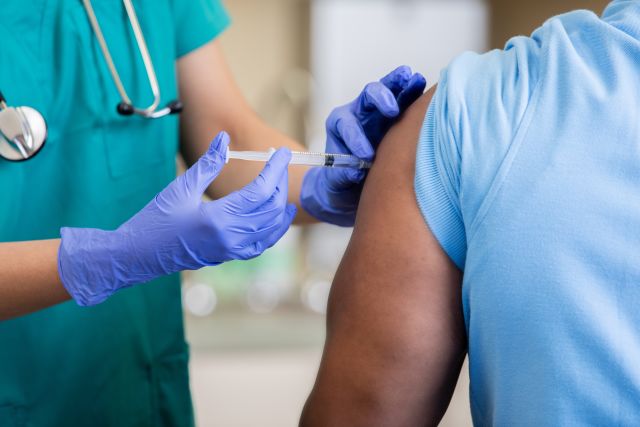Updated on September 9, 2024.
As the days grow shorter and cooler, it’s time to act against a seasonal threat: influenza. The flu claims thousands of lives each year and should be taken seriously.
Meanwhile, COVID is still circulating. In 2023, more than 916,300 people were hospitalized with COVID and more than 75,500 people died from the disease. The virus that causes COVID is always changing. Meanwhile, people’s immunity to the disease declines over time. Ongoing wastewater surveillance shows that COVID activity is currently high or very high in many states. As fall and winter sets in, the virus could have more opportunity to spread.
The best way to help protect yourself and others from both infections is to get vaccinated.
Need more convincing? Here’s why you should roll up your sleeve:
Both viruses are highly contagious
COVID generally spreads even more quickly and easily than the flu. But they are transmitted in similar ways. These viruses can spread through direct contact, contaminated droplets or through the air in aerosols—particles even smaller than respiratory droplets that may waft and accumulate.
Most people with flu are contagious for about one day before they even develop symptoms of the infection. Older kids and adults with the flu are most contagious after three to four days but may still pass the infection to others for about seven days.
By comparison, people with COVID may spread the infection from about two days before symptoms appear until about 10 days afterward. People with COVID may remain contagious for up to 10 days after testing positive even if their symptoms have resolved (or they never developed symptoms). Those with very severe COVID and those who are immunocompromised may remain infectious for up to 20 days or more.
COVID and the flu can be deadly
Like COVID, a person’s chance of dying from the flu varies, depending on certain risk factors, like their age, health and whether they are vaccinated. Variables among countries, such as population demographics and the quality of health care, also influence estimates on mortality rate.
In 2023, more than 916,300 people were hospitalized with COVID and more than 75,500 people died from the disease. It’s also estimated that between 2010 and 2023, there were up to 41 million flu infections annually. During that time, there were also 710,000 hospitalizations and up to 51,000 deaths from the flu each year, according to the Centers for Disease Control and Prevention (CDC).
In most cases, people with the flu or COVID will recover within a couple of weeks. But some people—particularly older people, very young children, and those with underlying health issues—are more likely to develop potentially deadly complications.
Safe and effective vaccines are available
There are vaccines available to help protect against the flu, as well as COVID and respiratory syncytial virus (RSV), which also tends to spread in the fall and winter months. Everyone ages 6 months and older should receive a flu shot and the updated 2024-2025 COVID-19 vaccine.
When the flu vaccine is well-matched to most circulating influenza viruses, getting the shot may decrease the risk of needing medical care for the flu by 40 percent to 60 percent. It’s true: sometimes people who get the flu shot are still infected with the virus. This can happen due to certain factors, including a person’s unique biological characteristics, the flu viruses in circulation (and whether the flu vaccine is a close match to these predominant strains) as well as the type of flu vaccine used.
Studies show, however, that getting the flu vaccine can still help reduce the severity of the infection and help prevent flu-related complications. So, if you get the shot and still get the flu, it may not be as bad.
And if that’s not enough motivation, consider this: getting vaccinated against the flu or COVID will also protect the more vulnerable people around you, including babies, older people, pregnant women, and those with chronic health conditions.
Other ways to protect yourself
Aside from getting vaccinated, there is a lot you can do to avoid exposure and reduce your risk of infection to both the flu, COVID, and other respiratory infections, including:
- Wear a face mask in crowded indoor spaces, particularly those with poor ventilation
- Practice physical distancing or stay at least 6 feet away from others
- Wash your hands well and often with soap and water for at least 20 seconds
- Avoid touching any part of your face, including your eyes, nose, or mouth with unwashed hands
- Avoid contact with people who have suspected or confirmed infections







